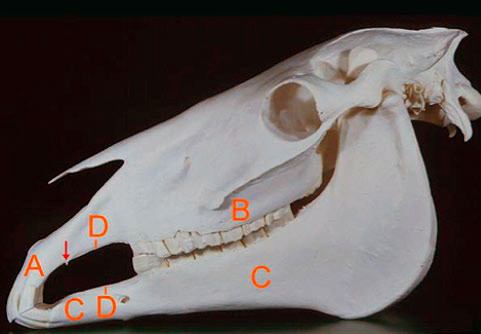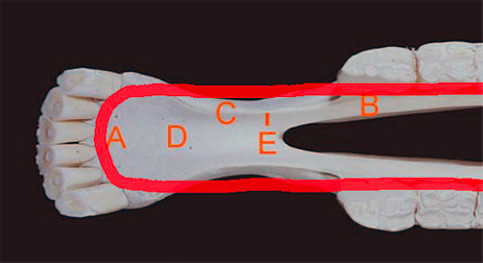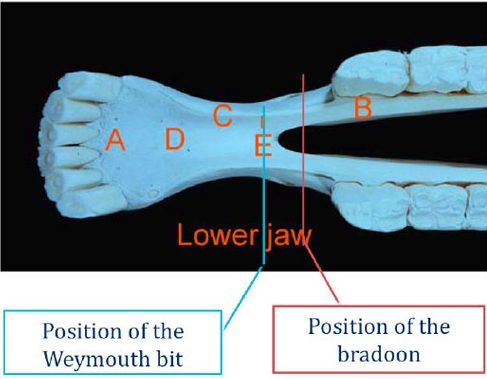Bit Fitting 101
The horse’s mouth contains many sensitive structures, including the hard palette, bars of the mouth and the tongue, which come into direct contact with the bit. An incorrectly fitted or inappropriate design of bit for your horse therefore has the potential to cause a large amount of discomfort – resulting in avoidance behaviors such as head tossing, opening the mouth, leaning or raised head. Tension and discomfort in the mouth transfers directly to the muscles of the neck, shoulder and back – preventing the back from being raised and the horse from working correctly.
Extensive research has shown we cannot assume that a fat bit is not always a softer bit or that a larger horse should wear a bigger bit than a smaller horse.
Palates can be low or high, and lips coming in many shapes and sizes.
The mouth cavity contains many nerve endings and is extremely sensitive.
The horse lives with his mouth: eats, vocalizes, works, relates to the outside world. It contains millions of nerve endings. There are no horses “deaf” or “hard” in the mouth, pain receptors can not be deleted nor go out: horses fight oral pain in different forms: some rear, others pull on the reins, while others seem to be resigned and have heavy mouth.
Placement of tongue. Rein aids travel from the rider’s hands, through the reins, over the horses tongue. Without the tongue, horses would not be able to be ridden in bits as we know them today. It serves as a ‘cushion’ for the horse’s mouth. The tongue is a muscle and a rider should take great care in keeping it relaxed and working properly just as care is taken with all other muscles.

B: molars/jaw
C: lower jaw
D: mouth cavity
Generally speaking, there is only 3½ cm between the upper and lower jaws. Tongue averages 2½ cm thick.


